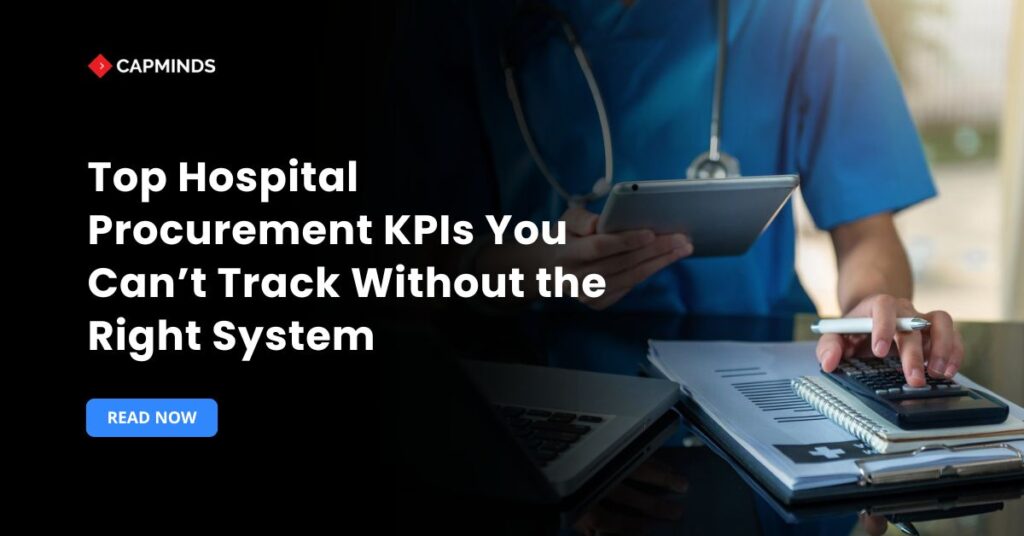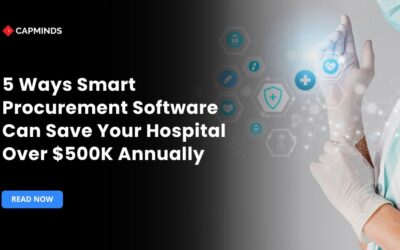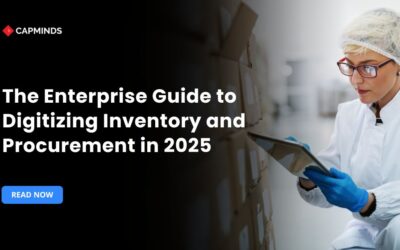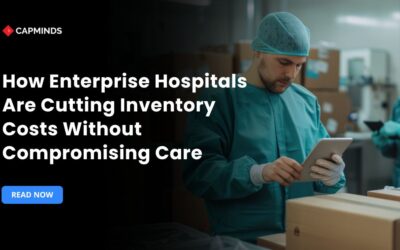Top Hospital Procurement KPIs You Can’t Track Without the Right System
Effective healthcare procurement is a critical aspect of managing hospital costs and patient care quality. Hospitals rely on many procurement metrics, from cost savings and inventory turns to supplier reliability and contract compliance, to ensure they obtain the right supplies at the right price. However, without an integrated system, these KPIs are often hidden in disconnected spreadsheets and gaps.
Industry analysts note that “without a centralized system, healthcare providers may struggle to track purchase orders”, resulting in delays and wasted effort. This means finance and clinical leaders cannot reliably measure key procurement KPIs, making it hard to control budgets or improve processes.
This blog shared the real-world challenges hospitals face in tracking procurement KPIs, the top metrics they need to monitor, and how modern digital solutions make these measures visible and actionable.
Real-World Challenges in Tracking Procurement KPIs
Hospitals encounter several obstacles that undermine procurement visibility and KPI tracking. Common issues include:
1. Decentralized Purchasing
Departments and clinics often buy independently, bypassing central contracts. This “rogue” buying means suppliers and costs go unmanaged, and bulk discounts are missed. In one analysis, decentralized ordering “leads to missed opportunities for bulk discounts and longer delivery times”.
2. Lack of Visibility
When purchasing occurs across multiple systems (or manually), administrators lose sight of orders and costs. Staff may not know where each order stands, who approved it, or how it maps to contracts.
Hospitals without a central system find it hard to even know who is ordering what, causing “inefficient communication and delays”.
3. Manual Processes
Relying on paper or spreadsheet-based workflows slows everything down and introduces errors. Manual entry of POs or invoices can delay fulfillment and inflate costs. Healthcare groups warn that such manual procurement is “time-consuming and prone to errors,” straining staff and budgets.
4. Inventory Imbalances
Without real-time tracking, hospitals either run out of critical items or overstock supplies. Inadequate inventory data means clinicians may scramble for supplies during surges or contend with expired stock during lulls.
As one report notes, inadequate tracking “can result in staff scrambling for supplies during high-demand periods or dealing with expired items”, both of which drive up costs.
5. Outdated IT Infrastructure
Many hospitals still use legacy systems that do not integrate. Such outdated IT makes data extraction and reporting difficult.
- SpentEdge observes that old systems “hinder data access and analytics capabilities,” limiting the ability to make informed procurement decisions.
- In practice, hospitals may have no easy way to generate reports on spend categories, contract usage, or order cycle times.
These factors mean that many hospital procurement KPIs cannot be tracked accurately. For example, “Spend Under Management”, the percentage of total purchasing that is controlled by procurement, becomes unknowable if departments buy off-contract.
Likewise, tracking contract compliance is futile if off-system buys are invisible. One supply-chain expert notes that if contract compliance is only 50%, it implies “5 out of every 10 dollars” are spent outside approved contracts.
Without technology to enforce and record every step of the process, hospital administrators lack confidence in any manually calculated KPI.
Key Hospital Procurement KPIs You Need to Monitor
When procurement is running smoothly, hospitals monitor a core set of KPIs to gauge performance, cost control, and quality. Key metrics include:
- Cost Savings / Savings Realized: The total dollars saved by negotiating better prices or changing suppliers. Hospitals often compare actual spending to a baseline to quantify the value of procurement initiatives.
- Spend Under Management: The proportion of total spending under the influence of procurement’s negotiated contracts. A higher percentage means fewer “rogue” purchases and more spending power.
- Procurement ROI: Return on investment of the procurement team, comparing cost savings to the procurement budget or operating costs. This measures how cost-effective the procurement function is.
- Procurement Cycle Time: The average time from requisition to order fulfillment or contract signature. Shorter cycle times indicate more efficient processes and faster delivery of needed supplies.
- Contract Compliance: The percentage of purchases made through approved contracts. Ideally, this should approach 100%, ensuring the hospital uses negotiated pricing. Low compliance means out-of-contract spending and lost savings.
- Inventory Turns: How frequently inventory is used and replenished. High inventory turns suggest efficient inventory management, whereas low turns indicate excess stock.
- Supplier Performance: Measures like on-time delivery, fill rates, and defect rates. Hospitals often use supplier scorecards to track whether vendors meet quality and delivery standards.
- Invoice Accuracy / AP Cycle: The percentage of invoices that match purchase orders (a few exceptions) and the days payable outstanding. High matching rates and short payment cycles improve cash flow.
- Internal Customer Satisfaction: Surveying clinical departments on how well procurement meets their needs (timeliness, completeness, etc.). This indicates if the procurement team is delivering value to doctors and nurses.
Each of these KPIs depends on accurate, timely data.
Without an automated system to capture orders, receipts, and invoices centrally, calculating metrics like cycle time or compliance requires tedious manual reconciliation across systems.
Related: The CIO’s Blueprint for Modernizing Inventory & Procurement in 2025
How Technology Makes KPI Tracking Possible
Modern procurement platforms overcome these challenges by capturing and unifying data across the hospital. Integrated systems connect purchasing, inventory, and finance so KPIs become visible in real-time. For instance, a solution that links the EHR or ERP with the supply chain automatically feeds purchasing events into dashboards.
This eliminates the need for manual data aggregation and ensures data accuracy.
When properly implemented, automation and AI transform procurement operations. For example, AI tools can scan hundreds of thousands of supplier contracts or product listings in minutes, a task that would take years manually. Automated procurement engines handle routine tasks (order entry, invoice matching, etc.) and flag exceptions.
One analysis notes that automated systems can match purchase orders with invoices and flag discrepancies, freeing staff from data entry and reducing errors. The result is far faster processing and far fewer mistakes: processes become more reliable and cost-efficient.
Hospitals using advanced procurement software gain capabilities such as:
1. Centralized Data and Real-Time Dashboards
All purchasing data is stored in one place. Executives can see up-to-date spend analytics by department, contract compliance, and order status. This visibility alone can pinpoint bottlenecks and overspending that would be invisible in spreadsheets.
2. Automation and AI
The system automatically routes requisitions, generates POs, and performs three-way invoice matching. AI-driven analytics identify cost-saving opportunities by comparing pricing trends or flagging inconsistent orders.
For example, healthcare AI platforms can process hundreds of thousands of products or contracts in one day, saving enormous time and revealing savings opportunities that manual review would miss.
3. Supplier Scorecards and Alerts
Digital tools continuously track supplier KPIs (like late deliveries or defect rates) and automatically alert procurement if a vendor’s performance slips. This proactive monitoring helps maintain high-quality supply chains.
4. Enforced Compliance
E-procurement platforms only allow purchases from approved catalogs and contracts, which drives up compliance. When purchasing is governed by the system, the percentage of spend under management rises, ensuring negotiated discounts are applied to a larger portion of spend.
5. Predictive Analytics and Inventory Optimization
Machine learning models forecast demand and adjust stock levels automatically. For example, analytics can predict a spike in demand for certain drugs each winter, so the system increases orders before shortages occur. This avoids both stockouts and excess inventory.
6. Streamlined Reporting
Automated reporting engines compile all procurement KPIs into regular reports or dashboards. Decision-makers (CFOs, CIOs, and supply chain directors) can drill down on metrics like procurement ROI or processing time without manual effort.
Ultimately, digital procurement systems deliver actionable insights that spreadsheets cannot. As one industry analysis concludes, modern procurement solutions “enhance supply chain management, reduce costs, and enable data-driven decision-making,” leading to better patient outcomes and efficiency.
The right health-tech platform turns procurement into a strategic asset rather than an administrative burden.
Case Study: Major Health System Overhauls Procurement
These benefits are not just theoretical. In practice, hospitals implementing integrated procurement platforms see dramatic improvements.
- For example, a large multi-state health system embarked on a comprehensive supply chain transformation.
- By centralizing procurement data and optimizing workflows, the system uncovered significant savings: about $250,000 in annual linen sourcing costs and over $5 million from more efficient laundry services.
- Likewise, by applying digital tools to route planning, the network reduced courier expenses by roughly $4 million.
- These discrete gains contributed to a projected $80 million in cost savings over five years.
Similarly, hospitals using a modern spend-management platform have reported striking results.
- One large healthcare customer saw its contract compliance soar to 83%, meaning the vast majority of purchases followed negotiated agreements.
- Across that platform’s user community, hospitals collectively saved over $855 million in one year through automated spend analysis and purchasing controls.
- These case outcomes underline how tracking and acting on procurement KPIs can yield very high ROI.
- They also illustrate that while the upfront digital investment is significant, the financial returns (and budget predictability) are far greater.
In each case, having the right system in place was crucial. The health system’s $80M savings were only realized after procurement data was captured and analyzed centrally.
Likewise, the compliance and savings figures above were possible because the platform recorded every transaction and enforced contract use. These statistics show that hospitals cannot achieve such a scale of improvement using manual methods alone.
Turn Procurement Into a Strategic Advantage with CapMinds
Tracking the right procurement KPIs is impossible without the right system, and that’s where CapMinds comes in.
Our end-to-end digital health tech solutions help hospitals streamline procurement, gain full visibility, and cut costs with confidence. With CapMinds, you get:
- Smart Inventory & Procurement Solutions to centralize purchasing and eliminate manual workflows
- Automated invoice matching and real-time dashboards to monitor spend, supplier performance, and compliance
- AI-driven analytics to uncover cost-saving opportunities and prevent stockouts or overstocking
- Seamless EHR and ERP integration to connect procurement, inventory, and patient care operations
- Customizable alerts and supplier scorecards to proactively manage supply chain performance
CapMinds empowers hospitals to take control of procurement with smarter technology, transforming hidden data into powerful insights that drive real savings and efficiency.
Reach out to CapMinds and let’s discuss optimizing your hospital’s supply chain.




